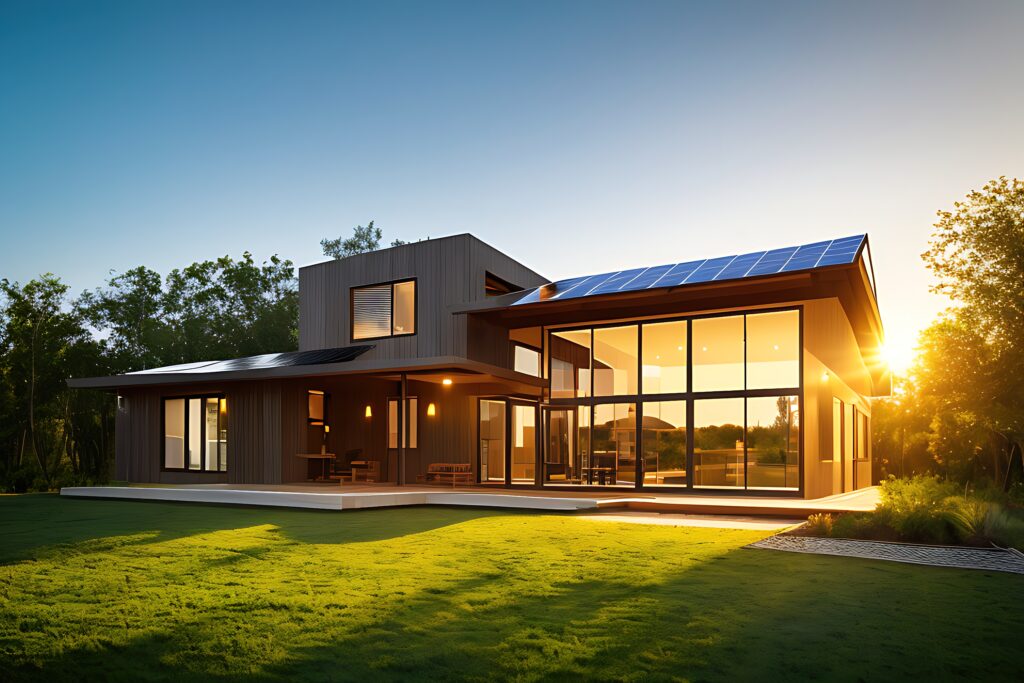Windows, often the gateway to natural light and views, also play a vital role in regulating a home’s energy efficiency. Among the array of innovations in window technology, Low-E (Low-Emissivity) windows stand out for their ability to balance natural light, comfort, and energy savings. Let’s delve into how Low-E windows work and the benefits they offer to homes and occupants.
Understanding Low-E Windows:
The Science of Low-E Coatings:
Low-E windows feature a microscopically thin, transparent coating—usually metallic oxides—applied to the glass surface. This coating’s primary function is to control the window’s emissivity, which determines how much radiant heat it absorbs, reflects, or transmits.
Heat Transfer and Radiation:
Radiant heat moves through windows in three ways: transmission (direct passage), absorption (retaining heat), and reflection (sending heat back). Low-E coatings are designed to minimize heat transfer by reflecting radiant heat back to its source, whether it’s outside during hot summers or inside during cold winters.
Types of Low-E Coatings:
Low-E coatings come in different variations tailored to specific climate conditions. They can be categorized as “hard coat” (pyrolytic) applied during the glass manufacturing process or “soft coat” applied in a vacuum chamber after the glass is manufactured, offering varying degrees of solar control and insulation.
Working Principles Behind Low-E Windows:
Summer Cooling:
During hot seasons, Low-E coatings on windows reflect a significant portion of the sun’s infrared heat (solar heat gain) away from the building’s interior, reducing indoor temperatures and lessening the load on air conditioning systems.
Winter Heat Retention:
In colder months, Low-E coatings prevent interior heat from escaping through the windows by reflecting it back inside, contributing to increased insulation and reducing heating expenses.
Visible Light Transmission:
Despite reflecting infrared heat, Low-E windows allow visible light to pass through, maintaining a bright and comfortable interior while minimizing heat gain or loss.
Benefits of Low-E Windows:
Energy Efficiency:
By mitigating heat transfer, Low-E windows enhance energy efficiency, reducing reliance on heating and cooling systems and lowering utility bills.
Comfort and UV Protection:
They maintain comfortable indoor temperatures year-round while blocking harmful UV rays, preserving furnishings, and protecting occupants from sun-induced skin damage.
Noise Reduction:
Low-E coatings, along with multi-pane designs, contribute to noise reduction, creating a quieter and more peaceful indoor environment.
Environmental Impact:
Their energy-saving properties align with sustainable practices, reducing a home’s carbon footprint by conserving energy.
Conclusion:
Low-E windows represent a significant advancement in window technology, revolutionizing the way we control indoor temperatures and energy consumption. Their ability to balance natural light, comfort, and energy efficiency makes them a valuable addition to any home. By leveraging the science behind Low-E coatings and their role in regulating heat transfer and light transmission, homeowners can enjoy enhanced comfort, lower energy bills, and a more sustainable lifestyle. Investing in Low-E windows not only transforms living spaces but also contributes to a greener, more efficient future.

